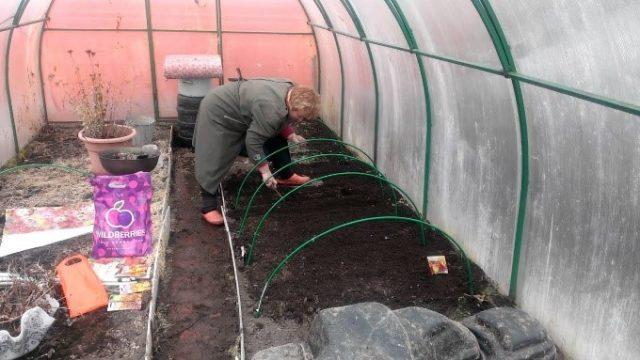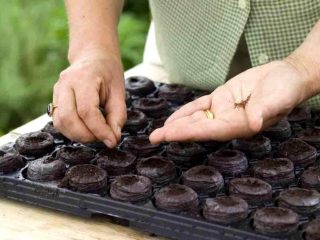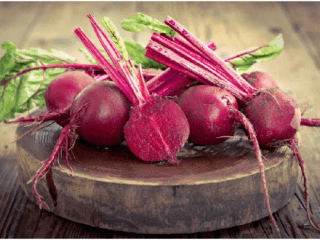Content
White cabbage is an indispensable product in cooking when preparing soups, salads, and main courses. It is often used in folk medicine. Agricultural experts believe that growing cabbage in open ground in the Moscow region is a very promising activity for farmers and amateur gardeners.

Getting a good harvest of cabbage in the Moscow region is possible with regular watering and fertilizing
Climatic features of the region
Vegetable gardening in the Moscow region is supported by the temperate climate characteristic of central Russia. The pronounced seasonality with warm spring, cool summer and moderately cold autumn and winter is explained by the region’s remoteness from the seas.
According to statistics, in the Moscow region there are 171 days a year with precipitation. The active growing season of plants, when the weather is relatively warm, is approximately 130-140 days. The duration of daylight from May to October is 15-17 hours, which has a beneficial effect on the development of most vegetable crops.

In the Moscow region, as in most Russian regions, the main method of growing cabbage is seedlings.
Timing for planting cabbage in open ground in the Moscow region
The time for sowing and planting seedlings in open ground in the Moscow region depends on the type of crop.
White cabbage is:
- early;
- mid-ripening;
- late.
In the Moscow region, early varieties of cabbage are planted in open ground in early May, mid-season cabbage at the end of the month, and late-ripening cabbage until mid-June. Some vegetable growers correlate the recommended planting dates with the dates of the lunar calendar.
When growing cabbage, it is important to remember that the longer the daylight hours, the faster the forks form. With a lack of sun, the lower leaves do not grow and die, and the apical bud throws out new leaves, which does not allow the head to set.

With a lack of sunny color, nitrates begin to actively accumulate in cabbage heads
Growing white cabbage in open ground in the Moscow region
When growing cabbage in the Moscow region, two methods are used: planting seedlings and sowing seeds in open ground. The length of the growing season allows the heads of cabbage to ripen. The seedling method is considered more productive in the Moscow region.
Growing seedlings
When purchasing cabbage seeds, you should pay attention to the information on the packaging. First of all, you need to familiarize yourself with the recommended sowing dates. Depending on the varieties in the Moscow region, seeds are planted for seedlings:
- early ripening - from March 15 to March 30;
- mid-late – from March 15 to April 15;
- late - from April 1 to April 25.
In mid-April, early varieties can be transplanted into a greenhouse to prepare for transfer to open ground.The seedling method allows you to grow white cabbage in the Moscow region with a limited duration of the natural growing season.

The best option for growing early varieties of cabbage in the Moscow region is a polycarbonate greenhouse
Before planting, harden the seeds by placing them in hot water for 15 minutes, and then in cold water for a minute, washed with a solution of potassium permanganate, and filled with an aqueous infusion of ash to stimulate development. You can use nutritional compositions Ideal, Epin, etc.
Cabbage seeds are left in damp gauze folded in several layers for two days to swell and sown as seedlings.
For cultivation, individual containers and common containers are used. In the first case, it takes more time to plant seeds, but there will be no unnecessary hassle when picking seedlings. Sowing in a large box is faster, but difficulties arise when thinning the bushes.
For full development, cabbage seedlings require neutral or low-acid soil. It is important that the soil intended for cultivation is loose, this will ensure air access to the root system. It is better to use peat-humus substrate for cabbage seedlings.
Sow the seeds in pre-watered soil no deeper than 1 cm. The air temperature in the room where the cabbage seedlings are kept should be approximately +20 0C. Containers with crops are covered with film to reduce water evaporation.
When shoots appear, the cellophane is removed and the temperature is reduced. Containers with cabbage seedlings are placed on a closed balcony, window sills or terrace. Young bushes thus get used to sunlight. After a month, the seedlings begin to harden with open windows.Two weeks after the first leaf appears, cabbage seedlings are picked.
Planting seedlings in open ground
After the formation of 5-7 leaves on the seedlings, the seedlings are moved to open ground. For cabbage beds, you need to choose an area that is well lit by the sun, with loamy or sandy soil, with a minimum level of acidity. The soil should be dug up and fertilizers should be added (wood ash, humus, nitrophoska). Experts believe that when transplanting seedlings into open ground, it is important to take into account the following factors:
- the soil should warm up to 15 0C, air temperature cannot be less than 12 0WITH;
- transfer of seedlings is planned for a cloudy day;
- landing is carried out in the evening.
Bushes of early varieties of cabbage are placed at a distance of 30-40 cm, mid- and late-ripening varieties - 50-70 cm. The seedlings along with the soil are transferred to the site, watered abundantly, and mulched.

When planting seedlings in open ground, the seedlings must have a root system formed
Seedless growing method
Since cabbage belongs to the category of frost-resistant crops, in the Moscow region you can plant the seeds directly in the ground. Early and middle varieties are grown using the seedless method. The features of this method are:
- sowing in the Moscow region is carried out in early May;
- the soil is first dug up;
- 5-6 seeds are added to each hole, while fertilizing the soil with compost or humus;
- planting material is covered with a mixture of fertile substrate, humus and peat;
- the planted bushes are watered and covered with film or non-woven material.
The covering fabric is removed after the second true leaf appears. Within a month, intensive care of the crop is organized, including watering, weeding, and treatment with agents that prevent diseases. When 4-6 true leaves appear on the seedlings, the plantings are thinned out. During the procedure, leave one plant in the hole, choosing the strongest bush.
Further care
Cabbage is a plant that requires regular care. Only if agrotechnical procedures are carried out in a high-quality manner can a good harvest be obtained in the conditions of the Moscow region.
Watering
Cabbage, like any garden crop, needs periodic watering. The frequency and rate of water depends on the stage of the growing season and the amount of natural precipitation. The interval between watering young plants in the Moscow region is 2-3 days. During the formation of heads of cabbage, the procedure is carried out once a week. Optimal watering is drip irrigation.

Over-watering of cabbage plantings is fraught with the development of fungal diseases and root rotting
Loosening
To prevent crust formation on the soil, loosening is carried out. Thanks to the procedure, a sufficient amount of oxygen is supplied to the cabbage roots. For heavy soils, which are typical for most areas of the Moscow region, frequent loosening is organized:
- During rooting of seedlings to a depth of 5 cm.
- A week after the first loosening - by 6-8 cm.
- If the soil is not mulched, then after each watering.
As soon as the leaves close, stop loosening so as not to injure the cabbage.To form additional roots and, accordingly, improve nutrition, the heads of cabbage are hilled. An eco-friendly way to grow cabbage in the Moscow region is presented in the video:
Feeding
At each stage of the growing season, cabbage needs different types of fertilizers. During the growth of leaf mass, nitrogen compounds are needed. Chicken manure or urea can replace chemicals. When tying cabbage heads, phosphorus-potassium complexes or folk remedies (wood ash, boric acid, yeast supplement) are used.
Mulching
Mulching is aimed at preserving moisture and preventing weed growth. Most often, bulk materials are used for the procedure, but you can cover the cabbage beds with transparent or black film. Cuts are made at the location of the seedling bushes. Care using covering material is similar to traditional care.
Protection from diseases and pests
The arsenal of means for protecting cabbage from diseases and pests is very diverse. Chemical insecticides are used in pest control:
- Deltamethrin;
- Malathion;
- Nicotine;
- Break;
- Gladiator.
To rid cabbage plantings of fungal diseases, fungicides are used. Agrotechnicians recommend the following drugs:
- Miravis;
- Fitosporin-M;
- Baktofit;
- Planzir;
- Gamair.
Supporters of organic methods of fighting infections can use folk recipes. Among the popular remedies among gardeners:
- tincture of tomato (potato) tops and garlic;
- solution of 9% vinegar (200 ml per 10 liters of water);
- decoction of onion peel or bay leaf;
- ash powder.
To prevent the spread of pests and infections, it is recommended to regularly inspect cabbage plantings.If signs of damage are detected, the beds can be treated with folk remedies, but chemicals are required to destroy a large colony of insects.
Harvest and storage
In the Moscow region, early cabbage is cut at the end of July, middle cabbage - in August. Late varieties are harvested in September-October. The main indicator of maturity is the elasticity of the head of cabbage.
Harvesting late-ripe cabbage goes like this:
- the heads of cabbage are pulled out of the ground along with the stalks;
- the forks are left on the bed for several days so that the cover sheets wilt;
- stalks are trimmed without tearing off the upper leaves.
Loose heads of cabbage are sent for salting, dense ones are stored in the basement. Cabbage is kept in boxes or on wooden shelves. Placing forks on a concrete floor is unacceptable.

The optimal temperature in the room for storing cabbage is -1-5 C
Conclusion
Growing cabbage in open ground in the Moscow region is practically no different from its cultivation in other regions of Russia, with the exception of the northern regions. It is possible to obtain a rich harvest of a product with excellent taste only if basic agrotechnical conditions are observed.








